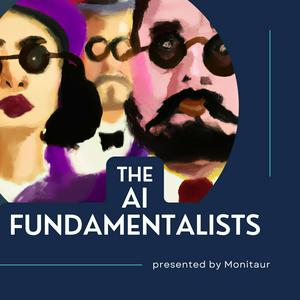Metaphysics and modern AI: What is space and time?
We explore how space and time form a single fabric, testing our daily beliefs through questions about free-fall, black holes, speed, and momentum to reveal what models get right and where they break. To help us, we’re excited to have our friend David Theriault, a science and sci-fi afficionado; and our resident astrophysicist, Rachel Losacco, to talk about practical exploration in space and time. They'll even unpack a few concerns they have about how space and time were depicted in the movie Interstellar (2014).Highlights:• Introduction: Why fundamentals beat shortcuts in science and AI• Time as experience versus physical parameter• Plato’s ideals versus Aristotle’s change as framing tools• Free-fall, G-forces, and what we actually feel• Gravity wells, curvature, and moving through space-time• Black holes, tidal forces, and spaghettification• Momentum and speed: Laser probe, photon momentum, and braking limits• Doppler shifts, time dilation, and length contraction• Why light’s speed stays constant across frames• Modeling causality and preparing for the next paradigmThis episode about space and time is the second in our series about metaphysics and modern AI. Each topic in the series is leading to the fundamental question, "Should AI try to think?" Step away from your keyboard and enjoy this journey with us. Previous episodes:Introduction: Metaphysics and modern AIWhat is reality?What did you think? Let us know.Do you have a question or a discussion topic for the AI Fundamentalists? Connect with them to comment on your favorite topics: LinkedIn - Episode summaries, shares of cited articles, and more. YouTube - Was it something that we said? Good. Share your favorite quotes. Visit our page - see past episodes and submit your feedback! It continues to inspire future episodes.



